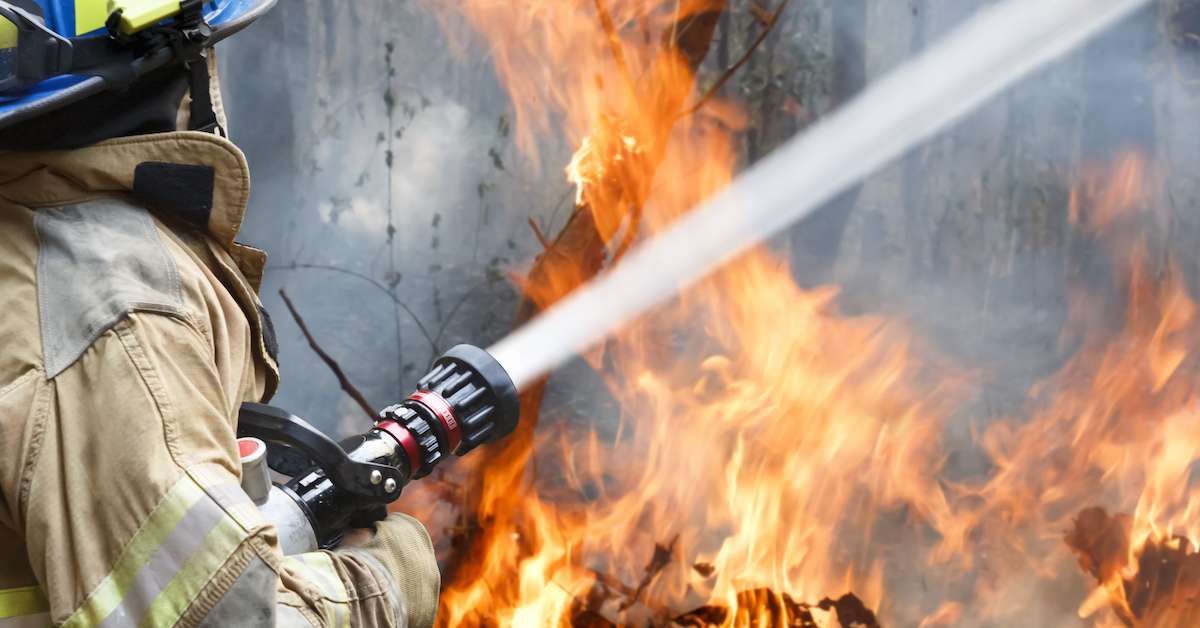
The Los Angeles Times reports that on Wednesday night, fire crews trying to save homes scattered among the tinder of brittle-dry pines in Big Bear Lake in San Bernardino County waited in vain for the arrival of a DC-10 laden with 10,800 gallons of retardant and two smaller retardant-carrying planes that were following it.
A spokesman for the US Forest Service, Chon Bribiescas, told the newspaper that an incident commander on the ground spotted a drone buzzing near the drop site – a restricted area close enough to the fire to be both illegal and dangerous.
Ars Technica reports that the unmanned aircraft was flying about 800 or 900 feet off the ground, at an elevation of 11,000 feet above sea level.
The Federal Aviation Administration (FAA) has set a 400-foot limit for unmanned aircraft flying in most situations.
The presence of the drone forced the three planes to turn back.
The DC-10 wound up dropping its load on a fire along the Nevada border, while the two smaller planes had to jettison their fire retardant, as it made the aircraft too heavy to land.
As the planes returned to their base, pilots spotted yet another drone, flying at 1200 feet.
It was “infuriating,” Bribiescas said.
Authorities couldn’t find the drone operators, though they did note that the one that got in the way of the retardant drops was an orange or red fixed-wing drone with a wingspan of four feet.
Mike Eaton, forest aviation officer with the US Forest Service, said police would patrol mountain roads, seeking people flying drones in the temporarily restricted airspace set by the FAA.
The cost of the failed mission and the squandered fire retardant: between $10,000 and $15,000 (between £6344 and £9515).
Eaton said that the presence of the drones also forced air drops to shut down 2 hours early on Wednesday, which in turn caused the wildfire to grow:
The fire certainly grew because we weren't able to drop the retardant. We had to shut down subsequent missions that could have possibly contained the fire.
By Thursday morning, the fire had reportedly spread to 23,199 acres, and by the late afternoon, it had spread a mile north to Heartbreak Ridge.
As of Monday morning, 60% of the fire – which translated into 30,726 acres at that point – was contained, the San Bernardino Forest Service tweeted.
Officials hastened to warn the public about how dangerous – and illegal – it is to fly unmanned aircraft in restricted airspace around a fire.
On its Twitter feed, the US Forest Service posted an image saying, “If you fly, we can’t,” adding that it’s “critically important that recreational UAS drone users not operate near wildfires.”
Critically important that recreational #UAS drone users not operate near wildfires https://t.co/ytq9csoUE1 pic.twitter.com/F3hTscFzyn
— USFS Fire-California (@R5_Fire_News) June 26, 2015
As it is, the drone-flying public seems to be oblivious to the risks, Bribiescas said:
These folks who are handling these drones, I have to assume they have no idea what they're doing. They not only endangered the folks on the ground, but they endanger the pilots.
Gerrelaine Alcordo, a representative for the San Bernardino chapter of the US Forest Service, told Ars Technica that while the two drone operators who caused the fire retardant drops to abort hadn’t been found, one drone operator had been found who was flying his aircraft too close to the Sterling fire, a smaller fire to the west of Big Bear Lake:
We did find one of the pilots, and the Sheriff's Department talked to them, but they weren't interfering with operations so they weren't charged. We were just trying to educate them.
Image of firefighter tackling wildfire courtesy of Shutterstock.
